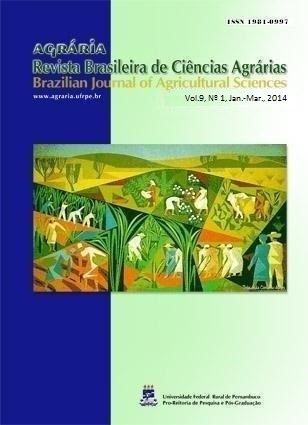Induction and detection of toxin in Cercospora zeina and Cercospora sorghi f. sp. maydis
DOI:
https://doi.org/10.5039/agraria.v9i1a3403Keywords:
Cercosporin, maize gray leaf spot, Zea mays L.Abstract
Cercosporin is a phytotoxin with toxic activity against large number of organism, it is produced by hypha in the culture medium. This way, the objective of this study was to induce the production of Cercosporin in Cercospora zeina (CZ) and Cercospora sorghi f. sp. maydis (CS) in 16 culture media, and to verify which medium is most suitable for detection of the toxin. Agar plugs were extracted and they were put in KOH for 16 hours. Cercosporin concentration was determined by using a molar extinction coefficient of 23300 L mol -1. Under the conditions in which the fungi were cultured, it was not possible to induce the toxin in CZ, which reinforces the hypothesis that the toxin is only produced in planta. CS produced a high concentration of toxin in coconut water Sococo® medium with yeast extract, 177.34 nmol plug-1. Only the M1D medium did not produce the toxin. There was a difference in the production of toxin depending on the brand and concentration of PDA medium. It is concluded that the media with coconut water Sococo® are efficient in the induction of Cercosporin in vitro by CS, which are promising for research in this area. Furthermore, CZ did not produce the toxin in the studied conditions.
Downloads
Downloads
Published
How to Cite
Issue
Section
License

This work is licensed under a Creative Commons Attribution-NonCommercial 3.0 Unported License.


